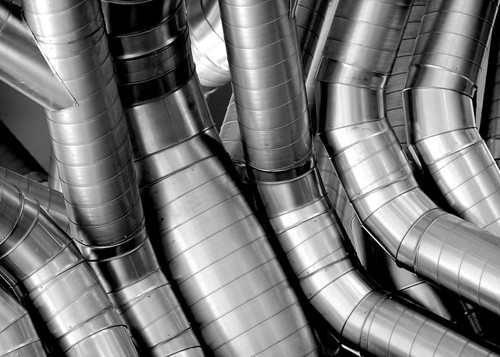 Imagine yourself breathing through a straw on a long distance run. You can’t get enough air in or out. Your lungs are swollen with too much used up air that can’t get out and pretty soon your whole body starts to burn from oxygen starvation. Your run won’t last long this way. It’s the same for your HVAC unit if your ductwork is too small.
Imagine yourself breathing through a straw on a long distance run. You can’t get enough air in or out. Your lungs are swollen with too much used up air that can’t get out and pretty soon your whole body starts to burn from oxygen starvation. Your run won’t last long this way. It’s the same for your HVAC unit if your ductwork is too small.
Just like you, your HVAC unit needs to have enough return air to breathe in and it needs to be able to “exhale” sufficient supply air in order to function properly. Your unit is designed for the long distance run, but depriving it proper air flow will cut that run short. The size of your HVAC unit dictates the size your ductwork needs to be. When first installed, selecting the correct size ductwork is a major factor in proper unit operation and unit longevity. It far easier to get ductwork right the first time than it is to correct it once walls and ceilings are up. Nor is it an obvious problem to troubleshoot after the fact, so it pays to pick your initial unit installer carefully!
One of our customers was having drastic temperature swings from one end of the building to the other – sometimes as much as a 10-15 degree difference from one room to the next! To fully explain, you need to have an idea of the basic building layout: one floor of the building is basically split down the middle with the offices on the west side served by one five ton rooftop package unit. And the offices on the east side served by another five ton rooftop unit. Each side of the office is broken up into six or so individual offices. All of the individual offices on each side have supply and return vents so that they get heat and cooling from the one unit that supplies their side, but only ONE of the six offices has a thermostat to control the unit. So the thermostat only knows the temperature of Bob’s office (where it’s located), but it has no idea what temperature Sally, Judy, Mark, Stanley or Kim’s offices are. OK, so that’s not a perfect situation, but it’s also not unusual.
There are some tricks to improve comfort with designs like this including an averaging thermostat which uses additional sensors – wired or wireless – that allow it to know multiple room temperatures then use the average of those temps to turn the unit on and off as needed. Often simply rebalancing the amount of air that is supplied to each room based on room size/location/etc. will correct uneven heating and cooling problems. Or relocating the supply and returns in a space. However, before we implemented any of the above solutions, we needed to make sure there weren’t other underlying issues in play, so we put our super-sleuthing caps on and went to work.
As you can probably infer by the subject of this blog, we discovered that the existing ductwork was too small for the size of unit they had. Not the main trunk of the ductwork – that was OK – but the takeoffs (the smaller ductwork that feeds the air from the main trunk into the individual rooms or areas of a space). The takeoffs were WAY too small. This was causing restricted air flow which can not only cause uneven heating/cooling, but can cause damage to the HVAC unit.
During the cooling season, insufficient airflow can cause coils to get too cold and ice up, causing compressor wear and tear or even damage (anything from a shortened compressor life to complete compressor failure). In the heating season, insufficient airflow can cause the unit to overheat itself and the ductwork. In this case, the air coming out of the vents was actually hot (like “ouch” hot) to the touch. The unit protects itself from overheating with a safety shut off, which is a good thing. But when the unit shuts off on high temperature limit (so no heat is being created), the fan comes on full speed to cool it off. Once it’s cool, the unit heat comes back on. So the unit is too hot, then blows cold, then hot again. This wreaks havoc on your unit and creates hot/cold drafts and uneven heating. The constant overheating/shut down/cool/reset/overheat again cycle can cause damage to the heat exchanger in the unit, especially if the high limit safety fails and heat skyrockets. At best, you’ll have a shortened exchanger life, at worst failure. All this from the wrong size ductwork!
The unfortunate truth is, a unit can run for years with the wrong size ductwork. You will probably see symptoms, like this example where there was uneven heating and cooling. Or it’ll manifest as premature compressor or heat exchanger failure. But these symptoms are often overlooked or treated individually without getting to the root of issue. Yet another reason to make sure that you choose a reputable, experienced contractor not only for your initial unit installation, but for all future service and maintenance as well.
So I leave you with this…wherever you land in the debate about size in other matters, I implore you to consult the experts when you are talking about the size of your ductwork. It’s too important, and too expensive, not to.

